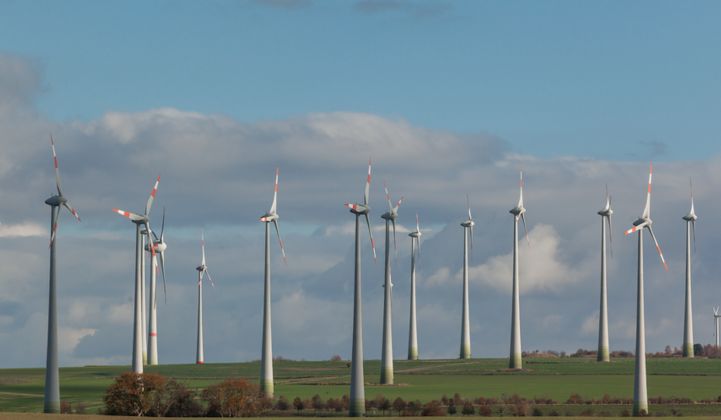Germany is the world leader in incorporating wind and solar power into its electricity mix -- and it’s bearing the resulting technical and economic challenges for its power grid.
Billions of euros are being spent on grid projects to help reduce the rising amount of green power that’s being curtailed to manage the country’s electricity balance.
According to a recently updated government report, Germany curtailed about 1,581 gigawatt-hours of green energy in 2014, a threefold increase from curtailments in the previous year. While that’s only about 1.2 percent of the renewable energy eligible for payments, it still required compensation worth about €83 million (US$94 million), and trends for 2015 were only increasing.
As the report notes:
According to the feed-in management rules, electricity produced from renewable sources must be fed into and transported on the grid with priority. Under specific conditions, the responsible network operator can scale back priority feed-in from these installations temporarily if the network capacities are not sufficient to transport the total amount of electricity generated. In particular, the restrictions on feed-in for conventional generators must first be exhausted. [...] The operator of the scaled back installation is entitled to compensation for the unused electricity.
This level of curtailment isn't out of line with other countries. But apples-to-apples comparisons are difficult to make because of different data reporting regimes in different regions, notes another analysis.
Still, "from a broader policy point of view, that puts Germany in a real bind,” said GTM Research analyst Mohit Anand. “As seen in the data, PV penetration levels are unsustainable as curtailment is increasing by an average 100 percent every year, and costs of compensation for curtailment are increasing near that much annually as well."
This is despite sharp reductions in PV policy support meant to slow down solar growth and ease the pressure on the grid, he noted. Per its Energiewende law, Germany is supposed to install 2.5 gigawatts of green energy per year. But GTM Research predicts it will miss that target by about 1 gigawatt in 2016.
The report also lays out data from more than 800 of Germany’s distribution system operators, or DSOs, that plan to spend €6.6 billion in the next 10 years on grid optimization and reinforcement projects. Another €2.6 billion will be invested into the high-voltage network over the same period.
Much of this is driven by the costs of integrating renewables into the grid, according to German regulators.
Cost differences between DSOs are due to their different network structures, as well as by restructuring and replacing investments. But it’s driven in particular by “the level of previously installed capacity and projected increase in output from renewable energy systems," according to the report.
Ben Kellison, director of grid research for GTM Research, notes a few clear trends in these deployments. “Voltage regulator deployment is gaining interest, along with conductor upgrades, installation of metering systems, and network topology change,” he said.
At the same time, Germany’s transmission system is undergoing a massive upgrade under 2009’s Power Grid Expansion Act that should help partially abate its green energy curtailment issues, Kellison said. As of the third quarter of 2015, about 30 percent of those power lines had been completed, and the transmission system operators responsible for carrying them out expect 40 percent will be finished by the end of this year, the report notes.
One of the key challenges for Germany is bolstering the long-term stability of its grid as more and more intermittent wind and solar power replaces firm generation resources like coal, natural gas and nuclear power plants. This problem is particularly pressing in south Germany, where the closure of two nuclear power plans will reduce capacity by some 2,686 megawatts by 2019.
“By contrast, the facilities under construction (including pumped storage stations in Luxembourg and Austria) have a combined capacity of just 621 megawatts,” the report notes. “This results in a negative balance of 2,323 megawatts between new builds and closures in southern Germany up to 2019.”
While energy storage could play a role in easing Germany's green energy integration challenges, it's not likely to be the primary resource for grid balancing. An upcoming government report says that residential and industrial power-to-heat systems and demand-side management will play the largest role.
Interestingly enough, the electric heating category is also showing a lot of activity in terms of competitive supply. Despite Germany's competitive energy markets, most energy customers stick with their default suppliers. However, about 770 gigawatt-hours -- or about 5.7 percent of the entire electric heating supply -- was provided by suppliers other than the default supplier in 2014. That's up from 2.3 percent over the previous year.



